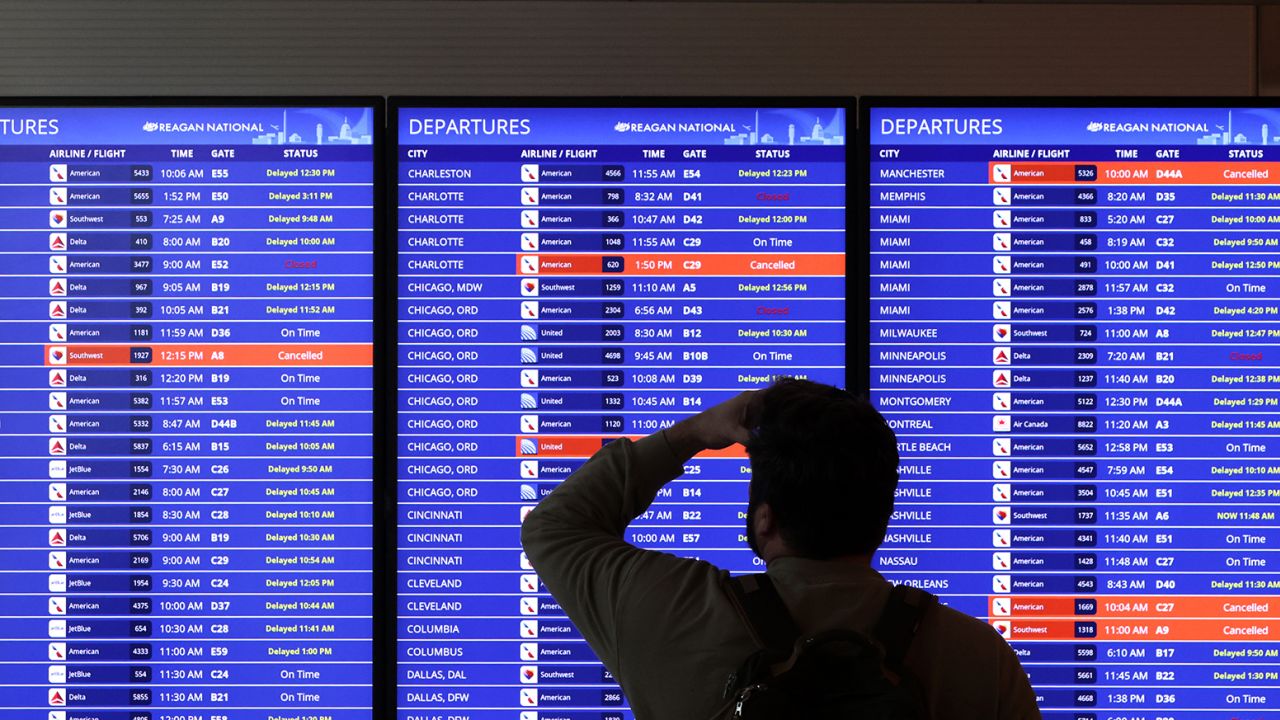The US economy is on a knife’s edge, potentially already in a recession after a second quarter of shrinking activity. But indicators are mixed, fueling uncertainty about the way forward.
At the core of the debate among economists and policymakers is a fundamental question with massive implications for America’s future: Which is worse — inflation, or a recession?
No one seems to agree one way or another.
By aggressively raising interest rates, the Federal Reserve is making a big wager that recession is worth the risk if it takes the heat off of consumer prices, which are rising at their fastest pace in four decades.
But many economists and lawmakers are pushing back on that idea, arguing that the so-called cure of a recession would be far worse than the disease of inflation.
To be sure, the Fed would like toavoid both. It’s aiming for a “soft landing” in which it hikes interest rates juuuustenough to slow demand without choking it off completely. That would be the ideal outcome, though the Fed itself admits the prospect of sticking the landing is getting increasingly difficult.
“The Fed’s actions to date do not guarantee a recession, but they have already made one more likely,” wrote Josh Bivens, the director of research at the left-leaning Economic Policy Institute, in a blog post earlier this month.
That leaves us with two potential outcomes: More inflation of the kind we’ve seen over the past year, or a recession that brings prices down while likely raising unemployment and crimping wage growth.
Team Inflation
Bivens is firmly in the “high inflation is bad but a recession is worse” camp. That’s largely because of what a recession does to the labor market. “A recession actually means your economy is on average poorer,” he told CNN Business.
Inflation clearly eats into people’s wages, and that’s a bad thing. (Consumer prices rose around 9% last month on annualized basis, while wages rose 5.3%.) But, Bivens says, “the one thing we know about recessions is they drive down wages much more reliably than inflation does.”
One of the main arguments his opponents make is that inflation comes with a sticky psychological problem. Once the idea of perpetual rising prices gets embedded in the consumer’s psyche, it can create a self-fulfilling cycle that’s tough to break. That’s no joke, Bivens says, but in his estimation, we’re simply not there yet.
In the United States, inflation has held steady at around 2% a year for the better part of four decades. Because of that, he argues, people mostly don’t expect recent inflation of around 9% to stick around.
“We should take advantage of those expectations and that credibility,” he says.
Senator Elizabeth Warren is another prominent voice in this camp, arguing that the root cause of our current inflation — including supply chain chaos wrought by the pandemic and the war in Ukraine — is far beyond the Fed’s jurisdiction.
Higher interest rates won’t fix soaring energy prices, Warren wrote in a Wall Street Journal op-ed last week, and “they won’t break up the corporate monopolies that Mr. Powell admitted in January could be ‘raising prices because they can.’”
When the Fed raises rates, it makes it more expensive for people and businesses to borrow money. That prompts everyone to spend less. Businesses slow hiring, reduce hours or lay off workers as demand dries up.
That, Warren writes, “will leave millions of people — disproportionately lower-wage workers and workers of color — with smaller paychecks or no paycheck at all.”
Team Recession
Others argue that recessions, while also not ideal, aren’t necessarily catastrophic. Theymay even be healthy.
Many who would argue for a recession over inflation point to the 1970s, when runaway inflation soared, peaking at 14% in 1980. It took painful interest rate hikes and two subsequent recessions in the early 80s, overseen by then Fed Chair Paul Volcker, to finally break the inflation cycle.
“A mild recession now is far preferable to the severe, Volcker-like recession that will be necessary to quell inflation if expectations become entrenched,” wrote economist Noah Smith in a blog post.
Not all recessions are created equal. The United States has gone through 34 recessions since 1857 — or roughly one every five years on average, according to data from the National Bureau of Economic Research. On average, each lasted about 17 months.
That means the US has shrugged off plenty of downturns.
“People tend to forgive mild recessions, but they get really, really up in arms about high inflation,” Smith writes in a Substack post titled “Yes, we’re probably in a recession, and that’s fine.”
But can a recession ever reallybe a good thing? Sometimes, says Lakshman Achuthan, co-founder of the Economic Cycle Research Institute, which determines recession dates for 22 economies around the world.
“Recessions can be cleansing events for the economy as a whole, forcing inefficient behemoths out of business and making room for more nimble competitors who can better satisfy customer needs,” he said in an email to CNN Business. “This time around, the economy has changed enough following the pandemic that new business opportunities are bound to have opened up.”
Achuthan points to some of the innovative businesses that emerged during recent downturns: Airbnb (founded in 2008), Uber and WhatsApp (founded in 2009) all emerged from the Great Recession of 2007-09.
Bottom line
Whether the United States is in a recession now or not is largely a semantic debate. There are signs the economy is cooling — demand for housing is easing up and consumer confidence is slipping.
In most recessions, federal stimulus is a typical way to stimulate the economy and restore consumers’ faith. Those financial lifelines aren’t as likely to land this time around.
“If the narrative becomes, ‘we had to have the recession because we overspent in 2021,’ it makes you sort of suspect no relief is coming,” Bivens says. “I just think that’s a mistake all around.”
—CNN Business’ Jeanne Sahadi contributed reporting.






















